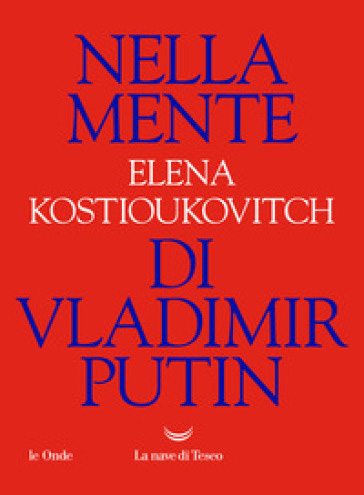Pasta is the most economical and easily obtainable food. The ingredient most receptive to a creative approach and individual interpretation. The most nutritious, and most in keeping with the Mediterranean diet. A food that allows the unlimited addition of any complementary nutritious, vitamin-rich substances. Perhaps most importantly pasta readily lends itself to a multiplicity of combinations in which it may be presented, all invariably delicious and a feast for the eye; combinations in which we often find that ingredient most radiant in terms of flavor and color, one of the most recently introduced, the most sunny and popular ingredient in Italian cuisine: the tomato.
To avoid terminological confusion, it is important to distinguish between “pasta secca” (dried pasta) and “pasta fresca” (fresh pasta). With fresh pasta, also called egg pasta, the binder is not water but egg. Therefore it may only be kept for a few days and only in the refrigerator.
It is no accident that in many foreign languages the term “macaroni” is used as a blanket term instead of “pasta”. It was the Italians themselves who set the example for this generalized use of the word maccherone. From the twelfth to the early nineteenth centuries, it was they in fact who applied the term “macaroni” to all types of pasta. Then, after having encouraged this terminological habit – that is, the custom of viewing “macaroni”, like “spaghetti”, as simply a synonym for “pasta” – not only in Italy, but throughout the world, the Italians abruptly shifted the ground rules and changed the use of the word. So that for at least two hundred years now the word “pasta” has been used in the more general sense, while the term “maccheroni” (and no longer “macaroni”) has acquired a narrow, regional meaning.
For some reason – maybe because of their funny, elongated shape, or because of the sound of the word, or for some other reason – the fact is that spaghetti or macaroni are the favorite targets of various adages, proverbs, and caustic witticisms. For example: “Guaje e mmaccarune / Se magnano caude” (“troubles and macaroni are swallowed hot”), according to the words of Giambattista Basile, who in the seventeenth century assembled and rewrote the popular heritage of fables and legends in the collection Lo Cunto de li cunti (The Pentamerone, Taylor ed. and tr., IV, 3, p. 254). Provoking, but on the other hand quite accurate, are the words formulated by Cardinal Giacomo Biffi in an address to students of Johns Hopkins University in Baltimore, when he stated that the Italians have but two universally accepted values: religion and spaghetti.
Spaghetti seems to be the ideal funny food for inspiring bold expressions and funny jokes. It is often encountered in humorous tales. A favorite story is one about Ferdinand I of Bourbon, the king with the prominent nose: during the years of his reign (1816-1821), in order to capture popular sympathies, it is said that he would appear in the piazza in Naples in the act of gobbling down spaghetti, tangling and twisting himself up in the strands of pasta like a clown. Whether it’s true or not, no one knows. What is notable is a typical Neapolitan figure, almost a symbol of the city: a commoner who publicly stuffs himself with spaghetti, raising them high above his head, and spreading two fingers over his mouth, as if to coil the dangling strands in the air. In that position he eats them, without dirtying himself in the least. It is also possible that the anecdote (apocryphal?) about king Ferdinand arose under the influence of the popular farce of Pulcinella, who “having become king, and to whom no macaroni was given because it was too common a food, said in Neapolitan ‘Mo mo me sprincepo’ [I will quickly step down as prince]”. This street scene is described by French traveler La Lande in his Voyage d’un françois en Italie en 1765-1766 (V, p. 494).
In eighteenth-century England the term “macaroni” referred to a dandy, that vane fop who imitated continental (Italian) fashions with affected mannerisms and a mincing gait purporting to be refined, with padded shoulders, a wasp waist and a great many accessories.
Literary history is familiar with the phenomenon of “macaronic” verse. The word “macaronic” used by literary historians and theorists since 1543, dates back to the poem Macharonea (1488) by Michele di Bartolomeo degli Odasi (Tifi Odasi or Typhis Odaxius, who died in 1492). The “macaronic” concept reflects the idea of a combination of right and wrong, just as pasta, sauce and grated cheese are mixed together in a dish of macaroni.
Above all it is a deformed Latin, an amalgam of languages “nostrana e forestiera” (our own and foreign). The founder of this artifice is considered to be Ausonius (fourth century A.D.), who introduced Greek words into Latin. Numerous macaronisms are found in Rabelais, Molière, and in the Aeneid of I.P. Kotljarevskij (1789).
Amusingly enough, poems written in the macaronic style often talked about macaroni itself. In Baldus (1571), by the greatest macaronic poet, Teofilo or Theophilus Folengo (1491-1554), who wrote under the pseudonym “Merlin Cocai”, the gods of Olympus are portrayed in the act of cooking. Jove in particular, preparing the macaroni, hurls thunder and lightning around him, making an infernal racket with forks and skillets. In the role of Ganymede, a master Prosciutto lives on Olympus, and illustrates the technique of preparing pasta. Subsequent to Folengo, the image of Jove casting storms over the world (that is, preparing pasta) was presented in the poem Lo scherno degli dei (The mockery of the gods, 1618) by a poet of the court of Pope Urban VIII, Francesco Bracciolini (late sixteenth-early seventeenth centuries). Octet XX, 60 describes the process of making macaroni according to a technique that has remained unchanged and is still used today by housewives: wrap the pasta dough around a rolling pin, cut thin little slices (fettuccine), then follow the recipe:
And then when that thin layer is wound
a hundred turns around a clean rolling pin,
with a sharp tool cut and loosen
the floury burden from it;
and the white strands, submerged,
at last brought to a high boil,
steam proudly, like thunder and lightning,
and so the macaroni cook, boiling away.
The leader of the Italian baroque school, Giovanbattista Marino (1569-1625), included in his collection La Galleria (The gallery, 1619) verses presumed to be those of Merlin Cocai (that is, Teofilo Folengo), in which he skillfully linked the term “macaronic”, applied to burlesque poetry, to the idea of “macaroni” as a typical dish:
The great Macaroneid composed by me
is made exactly like macaroni.
That on top have a crust of cheese,
and inside are stuffed with capons.
Because so much erudition is concealed there,
that it should not be swallowed in two gulps.
And if the covering is quite savory,
he who gets to the bottom licks his fingers.
There are a considerable number of works in which macaroni is viewed as a comical food. Francesco de Lemene (second half of the seventeenth century) wrote the burlesque poem Della discendenza e nobiltà de’ maccheroni (Of the noble descent of macaroni, 1654), in which masqueraders from Zaccagnino (from the city of Bergamo) and Coviello (representing Naples) confront one another in a duel using forks as weapons. They fight for the benevolent attention of Lady Pasta, mother of the young Macaroni. In the eighteenth century Iacopo Andrea Vittorelli composed the burlesque poem Maccheroni (1773); there is also another poem entitled Maccheroni, anonymous, published in Verona in 1785. In the celebrated burlesque poem Li Maccheroni di Napoli (The macaroni of Naples), written by Antonio Viviani and published in 1824, the word “spaghetto” appears for the first time; moreover the entire pasta preparation process is described, from the flour to the finished product.
English translation copyright © 2009 by Anne Milano Appel


